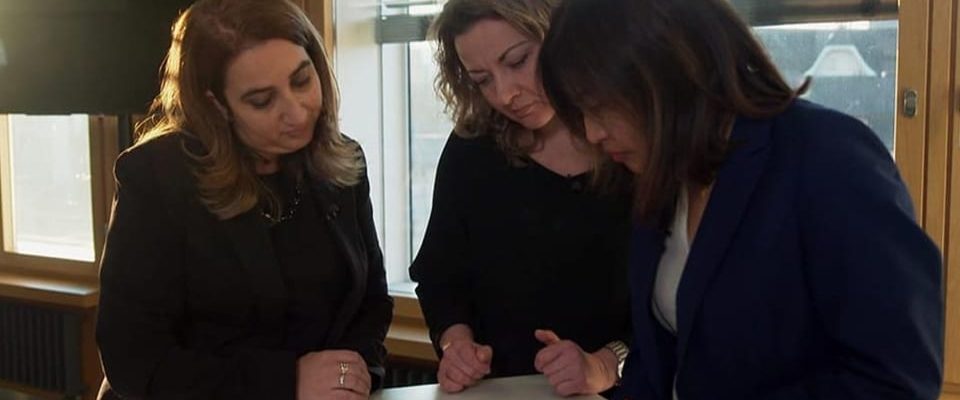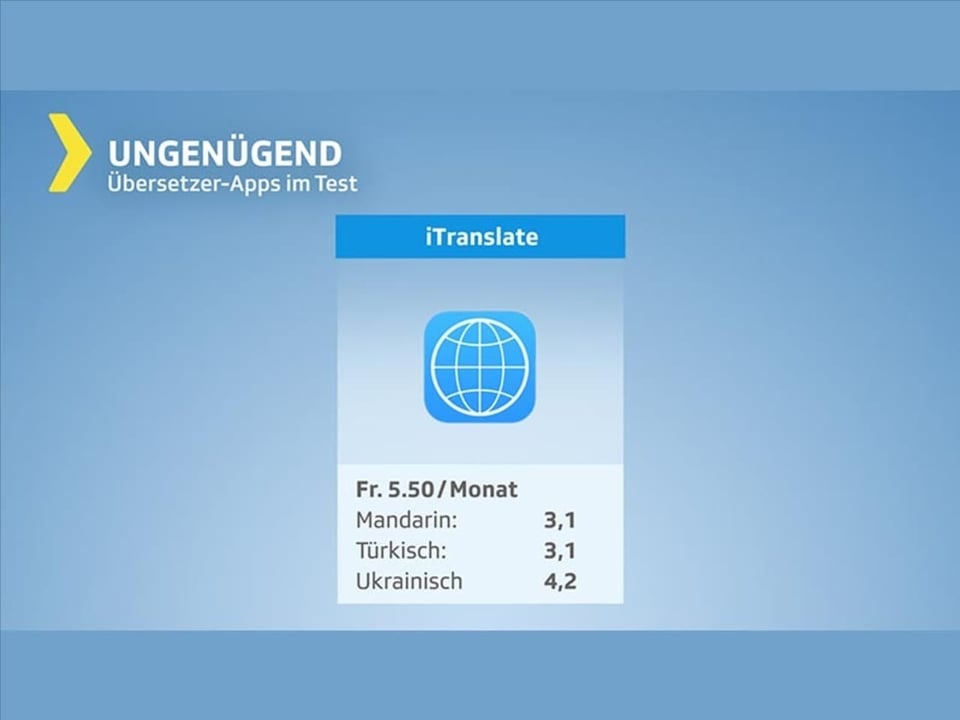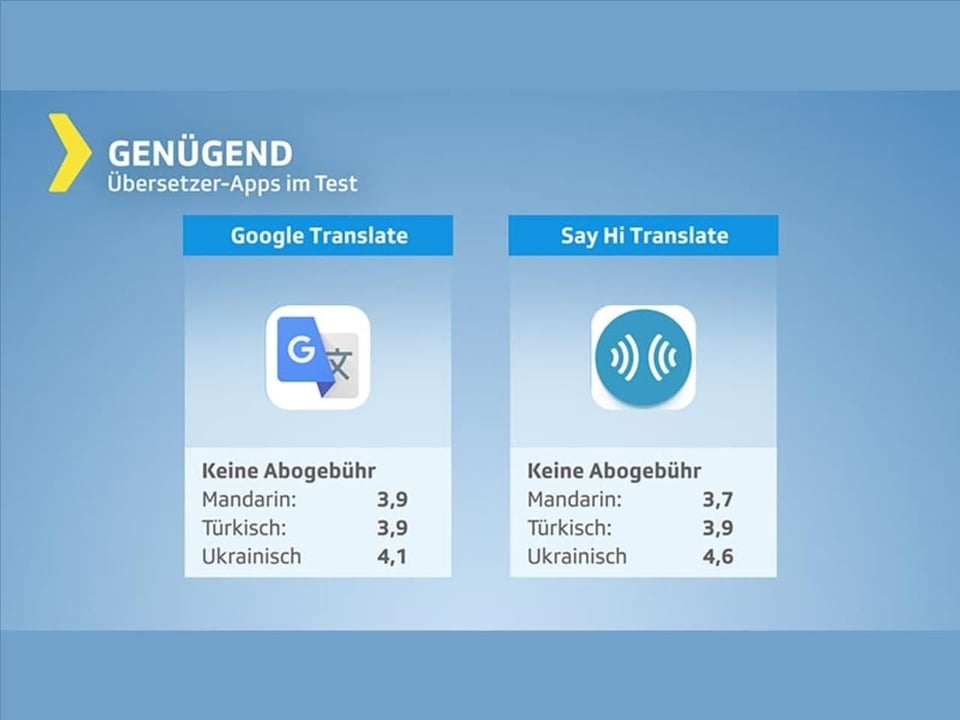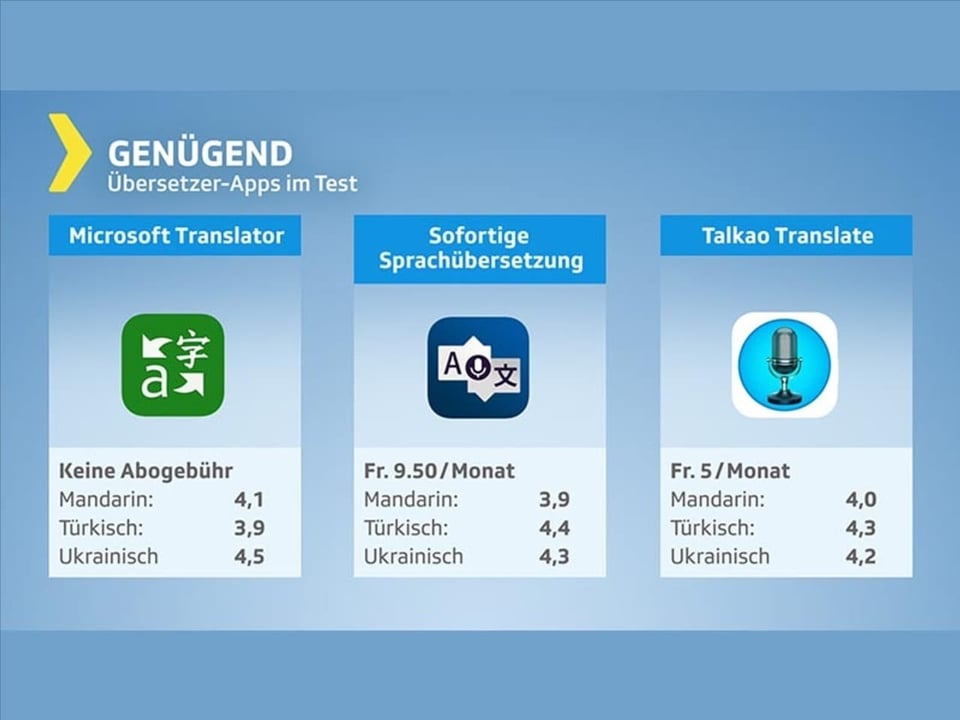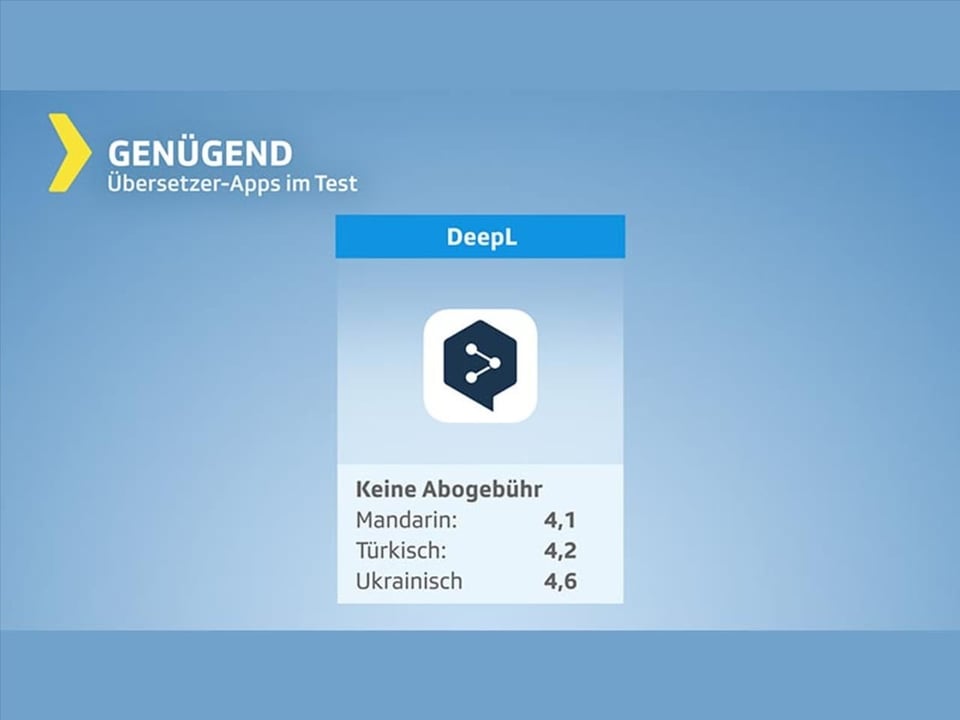Contents
Even the best translations in the test are only “sufficient”. Simple sentences and words produce better results.
It sounds useful: speak and understand languages from Afrikaans to Welsh thanks to a translator app on your phone. But does the other person really get the correct content?
“Kassensturz” tested how well seven of the most popular translator apps, such as Google Translate, Microsoft Translator and DeepL, translated spoken and written sentences. The jury examined the languages Ukrainian, Turkish and Chinese-Mandarin, languages that are difficult for many users to check.
Legend:
The expert jury found it difficult to award good grades.
SRF
Results are sobering but not discouraging
The jury itself only gave the best translations in the test a “sufficient”. However, “Kassensturz” deliberately tested with difficult sentences. Translations with written text input are generally slightly better than those with spoken texts. The good news: the result can be improved with simple, clear words and formulations. The bad news: If I don’t speak a language myself, I don’t recognize crass, awkward mistranslations.
Results at a glance
Tricky mistranslations
In the test, for example, Google Translate confidently translated the sentence “You will cause a stir with your finches in the exit” into Chinese (Mandarin) with: “Who used thighs in the exit to cause a stir?” Admittedly, the two Helvetisms “finches” and “exit” are tricky. However, this translation could cause unpleasant misunderstandings.
Different depending on the language
Best translated overall in the DeepL test. The best grades in the test were for Mandarin with a 4.1 and for Ukrainian with 4.6. The Microsoft Translator also received the same rating for Mandarin, and “Say Hi” also scored the best mark in the test for Ukrainian. For Turkish, the Instant Language Translation app provided the best translations. Unfortunately, there is not one app that is convincing in all languages. Depending on the language, the results can vary greatly for the same app. This also means that users first have to find the right app for the language they want.
Incidentally, translation professionals also use machine translation as a tool. To ensure that their texts do not appear anywhere in the public domain, interpreters and lawyers, for example, rely on programs with the providers of which they have expressly agreed confidentiality. Of course, this costs money.
